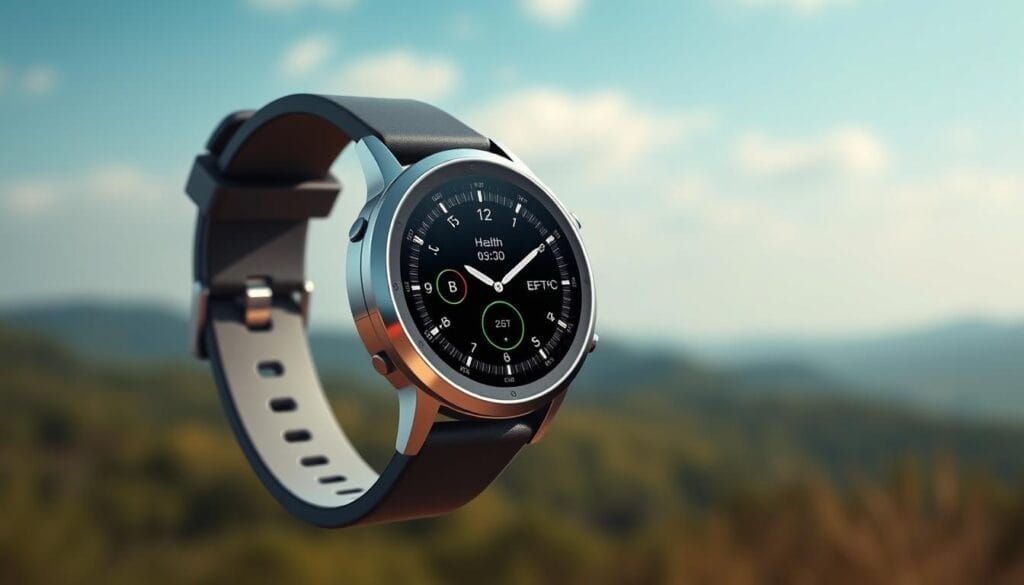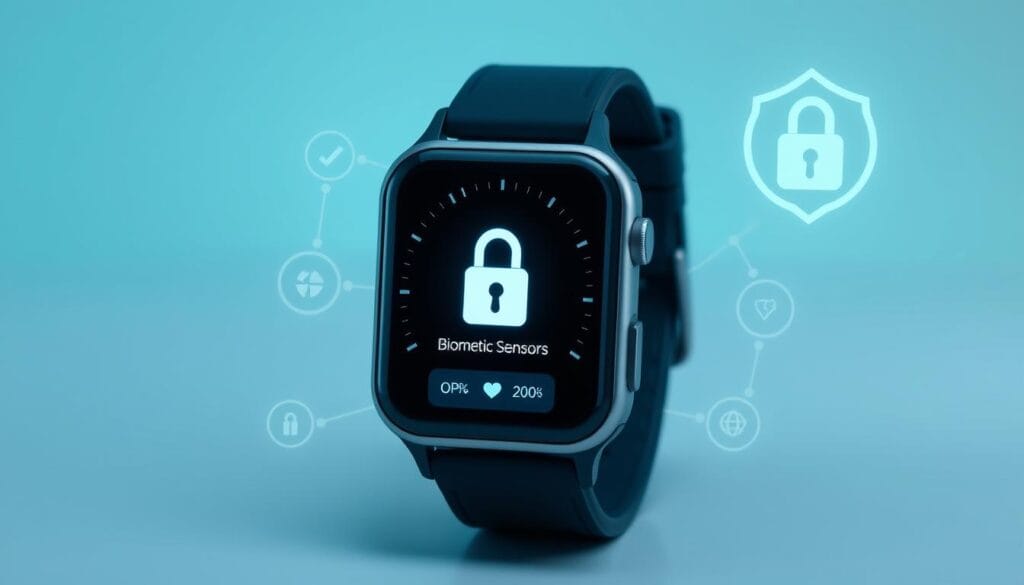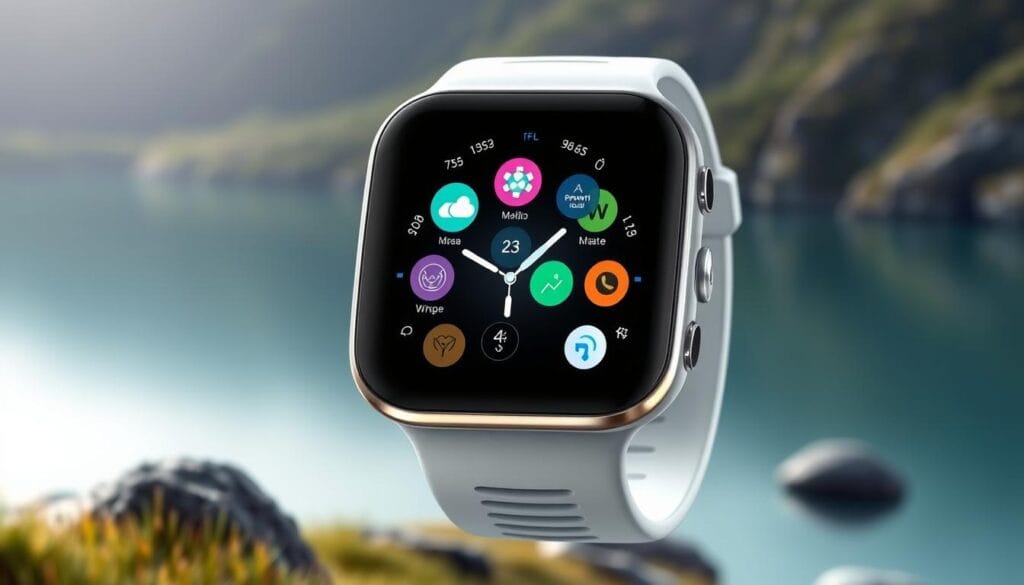Table of Contents
In today’s world, our digital tracks are always being followed. It’s more important than ever to protect our privacy. Smart watches have become key in keeping our personal data safe.
This guide explores degoogled smart watches. They help us regain control over our digital lives. Let’s dive into how these privacy-focused wearables work.

Key Takeaways
- Discover the rise of privacy-focused wearables and how they protect your data
- Explore the top degoogled smart watch options in 2024 for maximum privacy
- Learn about essential features to look for in ethical smart wearables
- Understand the benefits of open-source alternatives to mainstream smart watches
- Gain insights on setting up your LibreWatch with privacy-enhancing configurations
Understanding Degoogled Smart Watches: Privacy-First Wearable Technology
A new type of wearable technology has appeared – the de-googled smart watch. These devices focus on privacy, changing how we handle personal data. They are becoming popular for those who want to keep their digital lives private.
The Rise of Privacy-Focused Wearables
Privacy-focused wearables are a response to growing data privacy concerns. People are worried about tech giants like Google collecting their data. This has led to the creation of de-googled smart watches, which put users first.
How Degoogled Smart Watches Protect Your Data
Degoogled smart watches focus on keeping your data safe. They don’t use Google services and instead use open-source systems. This keeps your data private and away from corporate eyes. They also use strong encryption to protect your information.
Key Features of Surveillance-Free Smartwatches
- Open-source operating systems for enhanced privacy and control
- Independent app stores with a focus on user-centric applications
- Encryption and security protocols to protect user data
- Minimalist design and functionality to reduce data collection touchpoints
- Commitment to transparency and user autonomy
The demand for privacy-focused wearables is increasing. Degoogled smart watches are becoming a top choice for those who value their privacy. They offer a way to control your digital life.
Top Degoogled Smart Watch Options in 2024
In the world of wearable tech, privacy-focused smart watches are gaining popularity. They offer a privacy-focused alternative to mainstream options. With growing demand for degoogleized wearables and open-source smartwatches, 2024 will see exciting librewatches that protect user data. Let’s look at some top degoogled smart watch choices for 2024.
PineTime Smartwatch
The PineTime is an open-source smart watch with a degoogleized OS. It’s a secure and transparent option. It has a 1.3-inch color display, heart rate monitoring, and customizable watch faces. It’s a great mix of function and privacy.
Purism Librem 5 Watch
The Purism Librem 5 Watch runs on Linux-based Librem 5 OS. It focuses on security and user control. It has features like remote wipe, FOSS apps, and works well with the Librem 5 smartphone.
| Smartwatch | Operating System | Key Features | Pricing |
|---|---|---|---|
| PineTime | Custom open-source OS | Heart rate monitoring, customizable watch faces | $49.99 |
| Purism Librem 5 Watch | Librem 5 OS | Remote wipe, FOSS apps, Librem 5 integration | $199.99 |
These are just a few examples of the exciting degoogleized wearable options for 2024. As more people look for privacy-focused smart watches, the market for librewatches and open-source smartwatch solutions will grow.
Essential Features to Look for in Privacy-Focused Wearables
Choosing a privacy-focused wearable means looking at several key features. These features affect your data security and how you use the device. They include the software, hardware, and battery life.
Operating Systems and Software Compatibility
The operating system of your wearable is very important. Choose devices with foss (free and open-source software) watch operating systems. These are more open and less likely to collect your data without permission. Also, make sure the device works well with many foss (free and open-source software) watch apps. This lets you control your data better.
Hardware Specifications and Build Quality
The hardware of your wearable, like the processor and sensors, affects its performance and life. Look for devices that are well-made and last long. This means they can handle daily use and keep your data safe from damage.
Battery Life and Charging Capabilities
The battery life of your wearable is key. It affects how often you need to charge it. Choose devices with batteries that last a long time. This lets you use your wearable without worrying about running out of power. Also, think about how easy it is to charge the device, like fast-charging options.
| Feature | Importance for Privacy-Focused Wearables |
|---|---|
| Operating System | Prioritize foss (free and open-source software) watch operating systems for increased transparency and control over data collection. |
| Hardware Specifications | Robust, durable construction and high-quality components can protect your personal data from potential hardware issues. |
| Battery Life | Long-lasting battery life ensures reliable tracking and smart features without frequent recharging, minimizing data exposure. |

Open-Source Alternatives to Mainstream Smart Watches
The open-source smartwatch movement is growing fast. It gives users a choice away from big tech companies. These open-source smartwatches and foss (free and open-source software) watches focus on user freedom and privacy. They are great for those who want a device that doesn’t spy on them.
The PineTime is a key player in this movement. It’s made by the PINE64 community and the InfiniTime project. It has a long battery life and tracks health, all while keeping your data safe.
The Purism Librem 5 USA smartwatch is another top choice. It runs on PureOS, a Linux-based system by Purism. It’s all about security and privacy, with features like encrypted messages and kill switches.
The Antelope by Alternate Hands is for those who want more. It has a high-resolution OLED screen and can run many FOSS systems. It’s all about giving users control over their device.
| Smartwatch | Operating System | Key Features | Availability |
|---|---|---|---|
| PineTime | InfiniTime (RTOS) | E-ink display, Health tracking, Long battery life | Available for purchase |
| Purism Librem 5 USA | PureOS (Linux-based) | Hardware kill switches, Encrypted communications, Privacy-focused | Available for purchase |
| Antelope | Multiple FOSS options | OLED display, Advanced sensors, Customizable | Pre-order available |
These open-source smartwatches are a breath of fresh air. They let users control their data and enjoy a more private experience. They’re a smart choice for anyone looking to avoid the data-gathering habits of mainstream brands.

Setting Up Your LibreWatch: A Step-by-Step Guide
Exploring librewatches means diving into degoogleized wearable devices. These offer a privacy-focused alternative to mainstream smart watches. Setting up your LibreWatch is easy. It ensures you get the most out of your device while keeping your data safe. Let’s go through the steps to get you started.
Initial Configuration and Privacy Settings
When you turn on your LibreWatch, you’ll start the setup. This is where you customize your device and set your privacy preferences. First, connect your LibreWatch to your phone or computer with the cables provided. Then, follow the on-screen instructions to complete these steps:
- Choose your preferred language and time zone settings.
- Set up your personal profile, including your name and contact information.
- Enable the device’s privacy features, such as data encryption, location services, and app permissions.
- Adjust the display, notification, and sound settings to your liking.
Installing FOSS Applications
Librewatches let you install Free and Open-Source Software (FOSS) apps. These apps prioritize your privacy and security. To explore FOSS apps, follow these steps:
- Access the built-in app store or marketplace on your LibreWatch.
- Browse the selection of FOSS apps, focusing on those that align with your needs and privacy preferences.
- Install the desired apps, ensuring you review the permissions and privacy policies before proceeding.
- Familiarize yourself with the functionality and settings of your newly installed FOSS applications.
Data Synchronization Methods
Keeping your data safe is key with an ethical smart wearable like the LibreWatch. It offers different ways to sync your data:
| Synchronization Method | Description |
|---|---|
| Local Sync | Connect your LibreWatch to your smartphone or computer via a wired connection to transfer data directly between the devices. |
| Cloud-based Sync | Use a privacy-focused cloud storage service to securely sync your LibreWatch data across multiple devices. |
| Peer-to-Peer Sync | Wirelessly sync your LibreWatch data with other compatible devices in your network, without relying on a central server. |
These data synchronization methods help keep your LibreWatch data safe and under your control.
Comparing Cost and Value of Ethical Smart Wearables
When looking at degoogled smart watches and privacy-focused wearables, cost is a big deal. But, it’s key to see the bigger picture. We should think about the long-term benefits of these devices.
Mainstream smart watches might seem cheaper at first. But, they often come with a cost to your privacy. On the other hand, devices like the Purism Librem5 watch or the Pine64 PineTime might cost more upfront. Yet, they offer a safer, more private experience that’s worth it in the long run.
Choosing a degoogled smart watch means avoiding the hidden costs of data misuse. These devices also tend to last longer and are better for the environment. Plus, they support companies that care about your privacy and rights. In the end, the real value of these wearables is the peace of mind and security they give you.
FAQ
What is a degoogled smart watch?
A degoogled smart watch is a privacy-focused wearable. It’s designed to avoid Google services and surveillance. These watches run on open-source systems, focusing on privacy over data collection.
How do degoogled smart watches protect user data?
Degoogled smart watches protect data by avoiding Google services. Google is known for collecting a lot of data. These devices use open-source software and hardware, giving users more control over their data.
What are the key features of surveillance-free smartwatches?
Surveillance-free smartwatches have key features like open-source systems. They let users install FOSS apps and sync data securely. They also have long battery life, focusing on privacy and user control.
What are some popular open-source alternatives to mainstream smart watches?
Popular alternatives include the Purism Librem 5 Watch and the Pine64 PineTime. They offer FOSS app compatibility and privacy-focused systems. Users can customize these devices for ethical tech use.
How do I set up a LibreWatch and maximize its privacy features?
Setting up a LibreWatch involves setting privacy settings and installing FOSS apps. This guide helps you optimize your LibreWatch for privacy and function. It empowers you to manage your data and device use.
What are the cost considerations for ethical smart wearables?
Ethical smart wearables might cost more upfront. But, they offer privacy, customization, and longevity. These benefits make them a good investment for those valuing data protection and ethical tech.
You can learn more about mobile device reviews by clicking here.
Or you can check out our apps on the Play Store:

